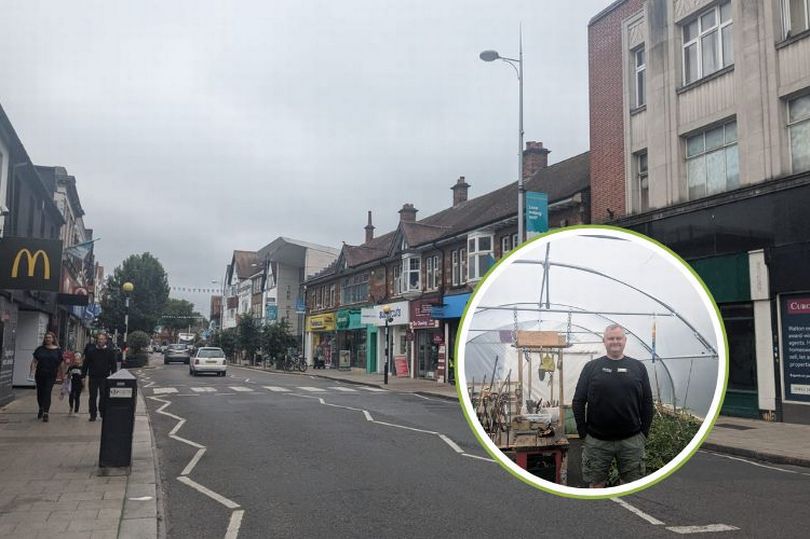Journey through Surrey's finest pubs, from historic inns to award-winning gastropubs, and uncover where your next memorable pint awaits.
Surrey has long been known for its picturesque landscapes, affluent neighborhoods, and highly sought-after properties. Yet, beneath this veneer of prosperity lies a tale of severe economic disparity, with one town emerging as a striking example of unaffordability and inequality. In recent times, this Surrey town has witnessed an unprecedented escalation in rental prices, making it the most expensive in the UK. As we delve deeper into the social fabric of this community, the stark contrast between the affluent and the impoverished becomes glaringly apparent.
Skyrocketing Rental Prices: A Growing Concern
Residents and potential tenants in this Surrey town have been grappling with the relentless surge in rental prices. Data indicates that rent here has risen more than anywhere else in the UK, creating a living environment where only the financially privileged can thrive. Families who have called this town home for generations find themselves at risk of displacement, unable to keep up with the soaring costs.
The property market dynamics have left many feeling helpless and frustrated. A once diverse community is gradually morphing into an enclave for the wealthy, pushing out those with modest incomes. This rapid gentrification has not only altered the town's demographic makeup but has also affected local businesses and services, catering increasingly to affluent clientele.
The Widening Gap Between Rich and Poor
As rental prices escalate, so does the divide between the rich and the poor. This Surrey town stands as one of the most unequal boroughs in the country, where luxury homes and poverty-stricken residences exist side by side. The disparity is not only evident in housing but permeates various aspects of daily life – from access to quality education and healthcare to employment opportunities and social mobility.
Wealthy families enjoy the best of amenities and services, while the less fortunate struggle to make ends meet. Food banks and charity organisations are stretched thin, trying to address the needs of the increasing number of residents falling below the poverty line. The sense of community that once defined this town is being eroded by burgeoning socio-economic divides, breeding resentment and discontent among its inhabitants.
Impact on Local Economy and Infrastructure
The repercussions of such inequality extend beyond individual hardships. Local businesses face the brunt of this disparity, with small shops and family-owned enterprises struggling to compete with high-end stores and boutiques that cater to wealthy customers. This has led to a homogenisation of the town’s retail landscape, favoring exclusive brands over diverse and locally significant offerings.
Furthermore, public infrastructure is under pressure. The influx of wealthier residents has spurred demands for improved services and facilities, which often come at the expense of investments in areas critical for lower-income groups. Public transport, affordable housing projects, and social services require substantial funding, which remains inadequate compared to the rising demand.
The Human Cost of Inequality

Source: https://www.getsurrey.co.uk/news/surrey-news/life-ridiculously-unaffordable-surrey-town-29619915
Beyond the statistics and economic ramifications lies the human cost of this growing inequality. Families facing eviction, children deprived of educational opportunities, and individuals battling mental health issues due to financial stress paint a grim picture of the human toll. Social cohesion is fraying as people become acutely aware of the widening chasm between their aspirations and reality.
This stark inequality also manifests in physical spaces – opulent gated communities juxtaposed with dilapidated housing units highlight the contrasting worlds coexisting within the same postcode. The sense of belonging and mutual support that forms the bedrock of any thriving community is under serious threat.
Looking Towards Solutions
Addressing the rampant inequality in this Surrey town requires a multi-faceted approach. Policy interventions focused on affordable housing schemes, rent controls, and economic opportunities for lower-income residents are crucial. Collaborative efforts between government bodies, private sectors, and community scan pave the way for more inclusive growth.
Empathy and solidarity among residents can also bridge some of these divides. Community-driven initiatives that foster understanding and cooperation between different socio-economic groups can help restore the town’s social fabric. Ensuring that every resident, regardless of their financial status, has a stake in the town's future is vital for sustainable and equitable development.
In conclusion, the 'ridiculously unaffordable' label attached to this Surrey town encapsulates a broader issue of socio-economic inequality. Recognising and addressing these challenges head-on can help reclaim the essence of this community, making it a place where prosperity doesn't come at the cost of equity and inclusivity.